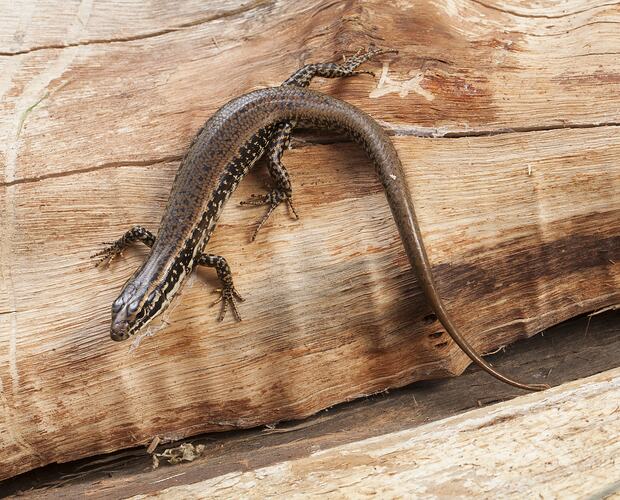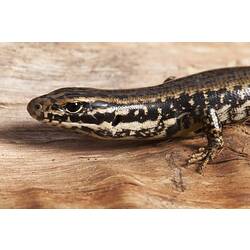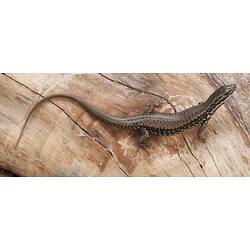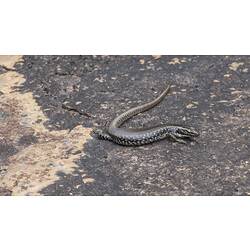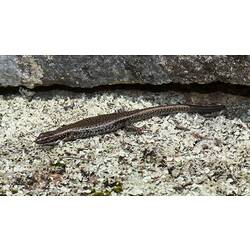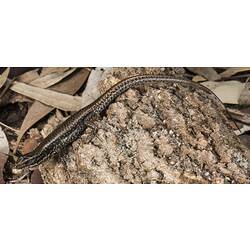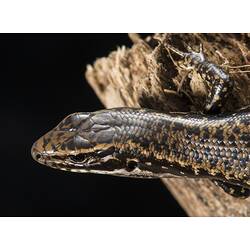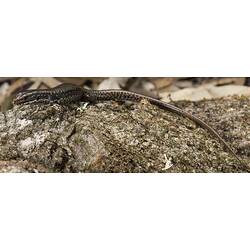General Description
Bronze to dark golden brown above with numerous black flecks, sometimes with a pale line from eye to forelimb. The back edge of the ear is black. The sides of the body are black with white flecks higher up and grey with black flecks lower. The under surface is white to yellow with black blotches on the throat and chin. Some adults have a pink throat. The abdomen and thighs may be bright yellow. Snout to base of tail length up to 10 cm.
Biology
The Yellow Bellied Water Skink prefers rocky open habitats, usually near water, along the inland slopes of the Great Dividing Range. It feeds on invertebrates, small vertebrates and occasionally fruit. It is inactive over winter and emerges in early spring. Females give birth to up to eight live young in summer. These skinks are commonly seem basking on waterside rocks and logs.
Distribution
South-eastern mainland Australia from New England in New South Wales to the Goulbourn River in Victoria. There is a separate population in South Australia.
Habitat
Wet and dry forests, bogs, open woodlands and heathlands, creek, river and swamp margins.
More Information
-
Animal Type
-
Animal SubType
-
Brief Id
A golden brown skink with flecks and spots. It is often found near water.
-
Colours
Brown, Black, White, Yellow, Pink
-
Maximum Size
10 cm
-
Habitats
-
Diet
Omnivore
-
Diet Categories
Invertebrates, small vertebrates, Fruit
-
Endemicity
-
Commercial
No
-
Conservation Statuses
CITES: Not listed, FFG Threatened List: Not listed, EPBC Act 1999: Not listed, IUCN Red List: Least Concern
-
Taxon Name
-
Scientific Author
Wells & Wellington, 1985
-
Common Name
Yellow-bellied Water-skink
-
Kingdom
-
Phylum
-
Subphylum
-
Class
-
Subclass
-
Order
-
Suborder
-
Infraorder
-
Family
-
Genus
-
Species Name
heatwolei
